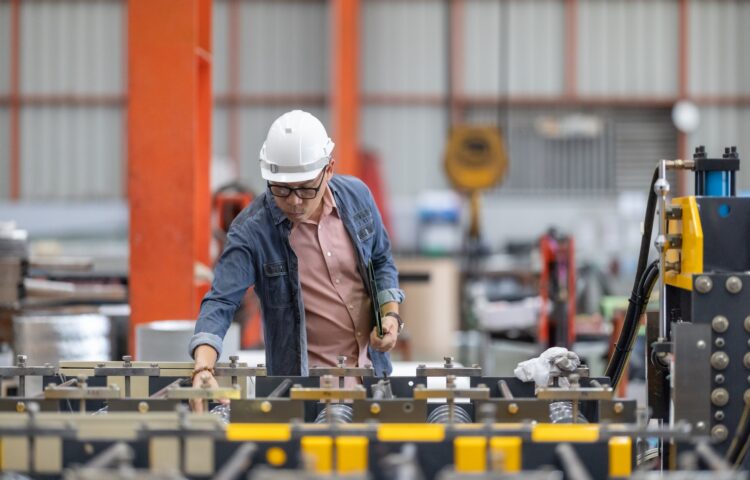The manufacturing sector is moving faster than ever—but speed doesn’t mean efficiency. Beneath the surface of automation, skilled labor shortages, and innovation, manufacturers are still wrestling with invisible friction points. These hidden bottlenecks not only slow down production but also inflate costs, delay deliveries, and cause quality issues. Solving them requires more than just better machines—it takes smart integration, refined processes, and a human-centric view of the workflow.
1. Where Automation Falls Short
Why Technology Isn’t Always the Fix-All
Automation has become the crown jewel of modern manufacturing. From robotics to AI-powered planning, it promises speed and consistency. But too often, companies treat automation as a plug-and-play solution. Without rethinking the workflow around it, it can create more problems than it solves.
For example, integrating advanced palletizing systems can improve end-of-line efficiency. But if upstream processes aren’t aligned, the machines sit idle, waiting for inputs. That’s not innovation—it’s expensive stagnation.
The Human Element in Automation
No matter how intelligent your equipment is, skilled operators and informed technicians are critical. When teams aren’t trained properly or aren’t involved in the system redesign, automation introduces confusion rather than clarity. Success lies in the blend: smart machines backed by smarter people.
2. The Skilled Labor Dilemma
The Disappearing Workforce
One of the most pressing issues in industrial environments is finding qualified workers. Roles like a seasoned press operator are increasingly hard to fill. Many young professionals bypass these careers, viewing them as outdated or less desirable, even though they offer strong income potential and advancement.
This talent gap leads to higher overtime costs, longer onboarding cycles, and increased error rates. Employers are left competing over a shrinking pool of candidates without adapting their recruitment strategies or work cultures.
Rethinking Hiring and Training
It’s time to reframe industrial jobs. Investing in apprenticeship programs, improving safety, and promoting long-term career growth can make these roles more attractive. It’s not just about hiring for today—it’s about building a resilient workforce for tomorrow.
3. Inventory: Too Much or Not Enough
The Cost of Inaccuracy
Inventory problems aren’t just about having too little or too much—they’re about timing and visibility. When parts arrive late or stock isn’t replenished on time, entire lines can grind to a halt. And yet, many companies still rely on outdated tracking systems.
The cost? Idle machines, rescheduled shifts, emergency orders, and unhappy clients. All of this could be avoided with better forecasting and live inventory tools.
Digital Tools With Real Impact
Modern ERP systems offer real-time monitoring and predictive capabilities, allowing teams to anticipate shortages and avoid overstocking. But tech adoption alone isn’t enough—companies must also train staff to interpret and act on this data consistently.
4. Maintenance Missteps
The Danger of Reactive Thinking
Maintenance is often treated as an afterthought—something to worry about only when things break. But reactive maintenance leads to downtime, rushed repairs, and higher costs. When small issues are ignored, they often snowball into expensive repairs or total replacements.
One common mistake? Skipping routine checks on high-impact assets. A minor calibration error in a heat press or conveyor could cause quality inconsistencies that go unnoticed until it’s too late.
The Move Toward Predictive Maintenance
The industry is shifting toward preventive and predictive models. These systems use sensors and data analytics to alert teams before a failure occurs. Not only does this protect machinery—it extends its lifespan and reduces operating costs.
5. Overlooking Niche Tech Advancements
Not All Tools Are Created Equal
While many manufacturers rush to adopt big-name solutions, niche tools often offer more tailored results. Medical manufacturing, for instance, has seen breakthroughs in patient outcomes through specialized technology like https://xcitetech.com/scarlets/, which supports precise aesthetic treatments.
Why does this matter for broader industry players? Because innovation isn’t always loud. The most effective solutions are often subtle improvements that reduce error margins, enhance user experience, or cut down cycle times quietly but meaningfully.
What NOT to Do: Ignore Frontline Feedback
One critical mistake manufacturers make is ignoring input from the workers closest to the process. The floor team often knows where inefficiencies live. Ignoring them in favor of top-down decision-making wastes insight and leads to ineffective fixes.
Conclusion
The challenges manufacturers face today go beyond what’s visible on the production floor. True efficiency isn’t just about automation or equipment—it’s about synchronized systems, well-trained teams, and constant feedback loops. By identifying hidden bottlenecks and solving them holistically, industrial leaders can build operations that are not only faster—but smarter, more resilient, and ready for what’s next.

